26th August, 2025
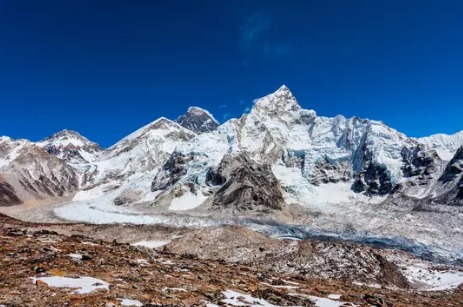
Jun 01, 2024
Lobuche Peak Climbing In November
- Introduction to Lobuche Peak Climbing
- Planning Your Trip: Preparations and Permits
- Training and Fitness Requirements
- Gear and Equipment Checklist
- Acclimatization and Altitude Sickness Prevention
- Trekking Route Overview
- Day-to-Day Itinerary: From Kathmandu to Lobuche Base Camp
- Climbing Techniques and Safety Measures
- Summit Day: Reaching the Top of Lobuche Peak
- Descending Back to Base Camp
- Challenges and Highlights of Climbing Lobuche Peak
- Weather and Climate in November
- Accommodation and Food on the Trek
- Cultural Insights: Interacting with Sherpa Communities
- Environmental Conservation and Leave No Trace Principles
- Post-Climb Recovery and Reflection
- Optional Side Trips and Excursions
- Tips for Responsible Travel and Etiquette
- Resources and Useful Contacts
- Appendices: Maps, Glossary, and Additional Information
- Lobuche Peak Climbing Packages
November marks a prime season for climbers aspiring to conquer Lobuche Peak, a prominent summit nestled within the iconic Khumbu region of Nepal. Rising to an elevation of 6,119 meters (20,075 feet), Lobuche Peak offers a challenging yet rewarding expedition amidst some of the world's highest and most spectacular peaks.
November presents ideal climbing conditions following the monsoon season, characterized by stable weather patterns, clear skies, and crisp mountain air. This makes it an optimal time for climbers seeking favorable trekking and climbing conditions with reduced precipitation and excellent visibility. The landscape is adorned with remnants of autumnal colors, adding a vibrant touch to the already breathtaking scenery of the Himalayas.
The journey to Lobuche Peak typically begins with a scenic flight from Kathmandu to Lukla, followed by a trek through the picturesque Khumbu Valley. The route passes through Sherpa villages like Namche Bazaar, where climbers can immerse themselves in local culture and hospitality. As the trail ascends, it winds through alpine forests, across suspension bridges spanning glacier-fed rivers, and eventually reaches higher altitudes adorned with snow-capped peaks.
Climbers often spend several days acclimatizing in strategic locations such as Namche Bazaar and Dingboche, allowing their bodies to adjust to the thinning air and reducing the risk of altitude-related illnesses. This gradual ascent enhances the chances of a successful summit bid.
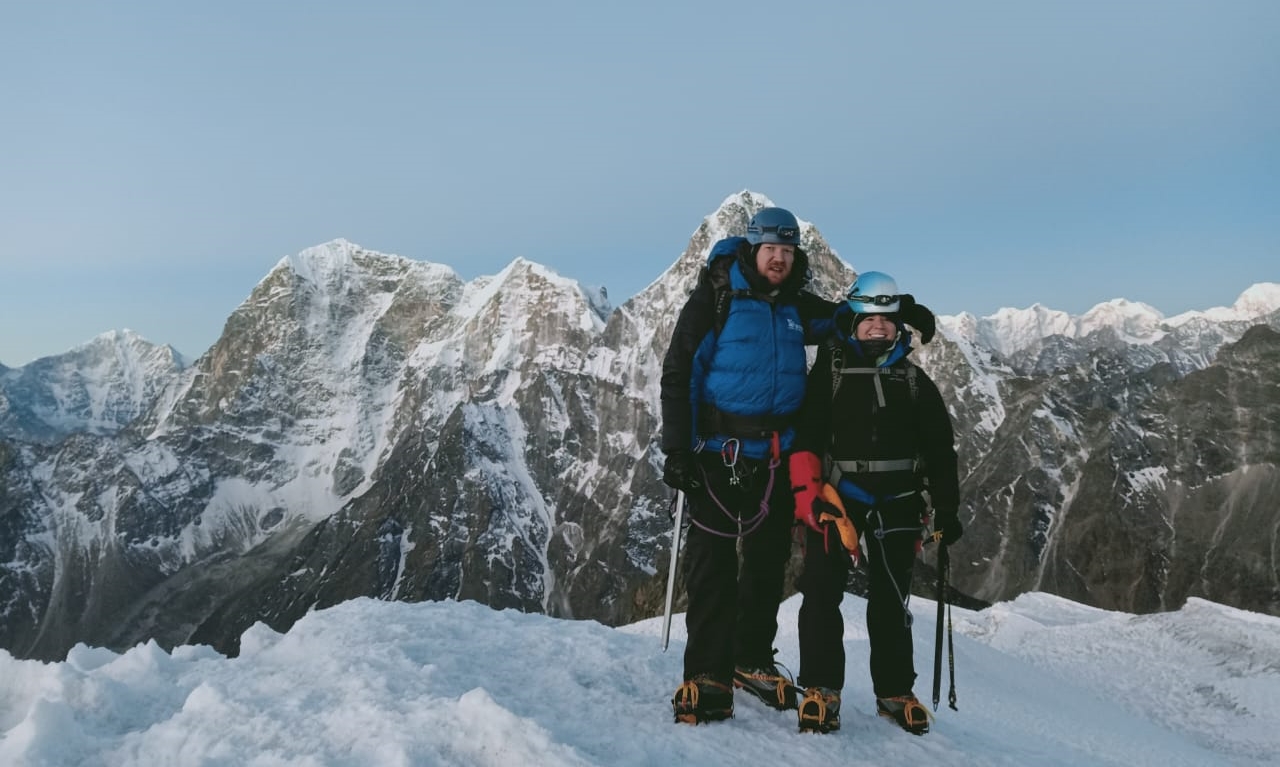
LOBUCHE PEAK CLIMBING
Lobuche East (6,119m/20,075ft), set in Nepal's stunning Khumbu on the Nepalese side of Everest.The best time to go trekking in Nepal is in Autumn (September-November) and in...
The ascent to Lobuche Base Camp at approximately 4,940 meters (16,207 feet) marks a pivotal point in the expedition, where climbers prepare for the technical challenges ahead. The route from Base Camp to the summit involves traversing rugged terrain, including glacial moraines and steep snow and ice slopes. Climbers need to be proficient in using climbing equipment such as crampons, ice axes, and ropes, under the guidance of experienced Sherpa guides.
From the summit of Lobuche Peak, climbers are rewarded with panoramic views that include Everest (8,848 meters/29,029 feet), Lhotse (8,516 meters/27,940 feet), and Nuptse (7,861 meters/25,791 feet), among other majestic peaks. The sense of achievement coupled with the awe-inspiring Himalayan vistas makes Lobuche Peak climbing in November a memorable and fulfilling adventure for mountaineers from around the globe.
November's favorable weather, stunning scenery, and cultural richness combine to offer climbers an unforgettable Himalayan experience, making Lobuche Peak an attractive destination for those seeking both challenge and beauty in equal measure.
Introduction to Lobuche Peak Climbing
Lobuche Peak, standing prominently at 6,119 meters (20,075 feet) in the Khumbu region of Nepal, offers climbers a thrilling expedition amidst the towering Himalayan peaks. Known for its technical challenges and stunning vistas, Lobuche Peak attracts adventurers seeking to test their mountaineering skills in one of the world's most awe-inspiring settings. The journey begins with a scenic flight from Kathmandu to Lukla, followed by a trek through the picturesque Khumbu Valley, where climbers traverse through Sherpa villages and lush forests. As the altitude increases, the landscape transforms into alpine terrain, leading climbers towards Lobuche Base Camp. From here, the ascent involves navigating glacial moraines and steep snow and ice slopes, requiring proficiency in ice climbing and the use of technical gear under the guidance of experienced Sherpa guides. Summiting Lobuche Peak rewards climbers with unparalleled views of Everest, Lhotse, and Nuptse, making it a truly unforgettable Himalayan adventure.

LOBUCHE PEAK SUMMIT RETURN BY HELICOPTER
A real climbing adventure that will leave you stunned at the beauty of the Himalayan Mountains. The Lobuche Peak Climbing expedition in the spectacular Khumbu region of Nepal has been ranked by Lonely...
Planning Your Trip: Preparations and Permits
Planning a successful Lobuche Peak climbing expedition begins with thorough preparations and obtaining necessary permits. Climbers must secure a permit from the Nepal Mountaineering Association (NMA) and a Sagarmatha National Park entry permit. These permits require submitting passport copies, passport-sized photographs, and insurance details through registered trekking agencies. Planning also includes arranging accommodations in Kathmandu and Lukla, as well as scheduling domestic flights to Lukla, a crucial gateway to the Khumbu region. It's advisable to plan for at least 16-18 days for the entire expedition, allowing ample time for acclimatization, summit attempts, and contingencies for weather delays. Working with experienced guides and support staff ensures a smoother journey, from logistics to safety protocols, enhancing the overall climbing experience.
Training and Fitness Requirements
Preparing for Lobuche Peak climbing demands a rigorous training regimen to build strength, endurance, and altitude fitness. Cardiovascular exercises such as running, hiking, and cycling improve endurance for sustained exertion at high altitudes. Strength training focusing on leg muscles, core stability, and upper body strength enhances stamina for navigating challenging terrain. Incorporate hikes in mountainous terrain with a weighted backpack to simulate the physical demands of the climb and aid in acclimatization. Mental preparation is equally vital, fostering resilience and determination to tackle the physical and mental challenges of high-altitude mountaineering. Training should commence several months before the expedition to ensure climbers are adequately prepared for the demanding conditions and maximize their chances of summit success.
Gear and Equipment Checklist
Climbing Lobuche Peak requires a comprehensive gear and equipment checklist to ensure safety, comfort, and success on the mountain. Essential items include mountaineering boots suitable for crampons, crampons themselves, ice axes, harness, helmet, and ropes for technical climbs. Clothing should include base layers, insulated jackets, waterproof pants, gloves, and headwear to protect against extreme cold and wind. A four-season sleeping bag rated for sub-zero temperatures and a high-altitude tent are necessary for overnight stays at higher camps. Other essentials include a headlamp with spare batteries, sunglasses with UV protection, a first aid kit, and a water purification system. Packing efficiently and selecting gear suited to high-altitude conditions are crucial for minimizing weight while maximizing safety and comfort during the climb.

LOBUCHE PEAK EXPEDITION 14 DAYS
The Lobuche Peak Expedition is a 14-day trekking adventure that takes you to the heart of the Khumbu region in Nepal. It is a popular trekking peak in the Himalayas, with stunning views of the surroun...
Acclimatization and Altitude Sickness Prevention
Acclimatization is vital for climbers ascending Lobuche Peak to mitigate altitude sickness and enhance their chances of a successful summit. The ascent should be gradual, incorporating acclimatization stops in Namche Bazaar, Dingboche, and Lobuche Base Camp to allow the body to adjust to reduced oxygen levels. Climbers should hydrate adequately, avoiding alcohol and tobacco, and maintain a steady pace to minimize physical exertion. Monitoring symptoms of altitude sickness, such as headaches, nausea, or dizziness, is crucial, with immediate descent recommended if symptoms worsen. Climbers should adhere to recommended ascent rates and rest days to aid acclimatization, ensuring a safer and more enjoyable climbing experience. Familiarizing oneself with altitude-related risks and preparing accordingly with a well-paced itinerary and proper hydration and nutrition strategies are essential for optimizing health and performance on Lobuche Peak.
Trekking Route Overview
The trekking route to Lobuche Peak begins with a scenic flight from Kathmandu to Lukla, often described as one of the world's most thrilling airstrips. From Lukla, climbers embark on a trek through the Khumbu Valley, following a well-trodden path that passes through vibrant Sherpa villages like Phakding and Namche Bazaar. The trail continues past Tengboche Monastery, with its serene backdrop of Everest, Ama Dablam, and other peaks, offering cultural insights and breathtaking views. As climbers ascend, the landscape transitions from lush forests to alpine terrain dotted with rhododendron and juniper bushes. Acclimatization stops in Dingboche and Lobuche provide necessary rest and adaptation to the altitude before reaching Lobuche Base Camp. The final stretch to Base Camp involves crossing glacial moraines, with views of Lobuche Peak looming larger as climbers prepare for the technical ascent ahead.
Day-to-Day Itinerary: From Kathmandu to Lobuche Base Camp
Day 1-2: Arrival in Kathmandu, trip briefing, and sightseeing.
Day 3: Fly to Lukla (2,800m/9,186ft), trek to Phakding (2,652m/8,700ft).
Day 4: Trek to Namche Bazaar (3,440m/11,286ft).
Day 5: Acclimatization day in Namche Bazaar.
Day 6: Trek to Tengboche (3,870m/12,694ft).
Day 7: Trek to Dingboche (4,360m/14,300ft).
Day 8: Acclimatization day in Dingboche.
Day 9: Trek to Lobuche (4,940m/16,207ft).
Day 10: Trek to Lobuche Base Camp (4,940m/16,207ft).
Day 11-12: Acclimatization and training at Base Camp.
Day 13-15: Summit push and descent to Base Camp.
Day 16-17: Descend to Lukla and fly back to Kathmandu.
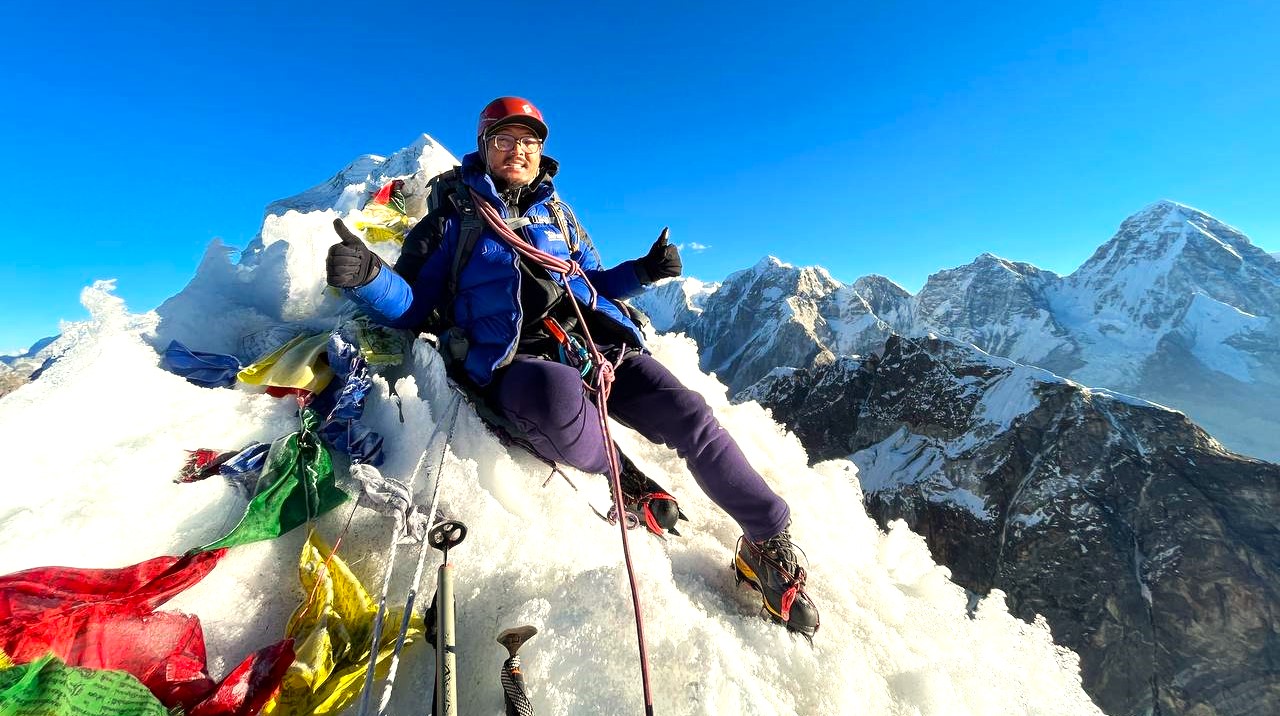
LOBUCHE PEAK EXPEDITION 15 DAYS
Lobuche Peak Expedition is a thrilling adventure that takes you to the heart of the Khumbu region in Nepal. The peak stands at an altitude of 6,119 meters and offers stunning views of the surrounding...
Climbing Techniques and Safety Measures
Climbing Lobuche Peak requires mastering essential mountaineering techniques and adhering to rigorous safety measures. Key climbing skills include using crampons and ice axes for navigating steep ice and rock faces, roped team travel for glacier crossings, and efficient rope management techniques. Safety measures encompass understanding weather patterns and forecasts, employing proper communication protocols with radios or satellite phones, and establishing emergency protocols for rescue operations. Climbers should maintain physical and mental preparedness, recognizing signs of altitude sickness and adapting ascent plans accordingly. Proper gear maintenance and selection, including four-season tents, down suits, and high-altitude sleeping bags, ensure comfort and protection against harsh mountain conditions. Collaboration with experienced guides familiar with the route and trained in high-altitude first aid enhances safety and confidence throughout the expedition.
Summit Day: Reaching the Top of Lobuche Peak
Summit day on Lobuche Peak begins in the early hours of the morning, typically before dawn, to take advantage of stable weather conditions and ensure sufficient daylight for the ascent and descent. Climbers depart from High Camp equipped with essential gear, including helmets, harnesses, crampons, and ropes, and proceed along the route marked by fixed lines where necessary. The ascent involves negotiating challenging terrain, including steep snow and ice slopes and crevassed sections requiring careful navigation and teamwork. As climbers ascend, they are rewarded with panoramic views of Everest, Lhotse, and neighboring peaks bathed in the golden hues of sunrise. Upon reaching the summit (6,119m/20,075ft), climbers celebrate their achievement with a sense of awe and accomplishment, capturing memorable photos and sharing moments of reflection before beginning the descent back to Base Camp.
Descending Back to Base Camp
Descending from the summit of Lobuche Peak involves retracing steps along the same route used for the ascent, carefully navigating technical terrain and maintaining focus amidst fatigue and changing weather conditions. Climbers descend in stages, with breaks at designated camps to rest, rehydrate, and monitor physical well-being. Descent techniques include controlled rappelling and using fixed ropes for added security on steep sections. As climbers descend, they reflect on their journey, savoring final glimpses of the Himalayan landscape and cherishing the memories forged during the ascent. Upon reaching Lobuche Base Camp, climbers celebrate their successful summit bid, reunite with fellow climbers and support teams, and prepare for the trek back to Lukla and onward to Kathmandu, concluding an unforgettable Himalayan adventure on Lobuche Peak.
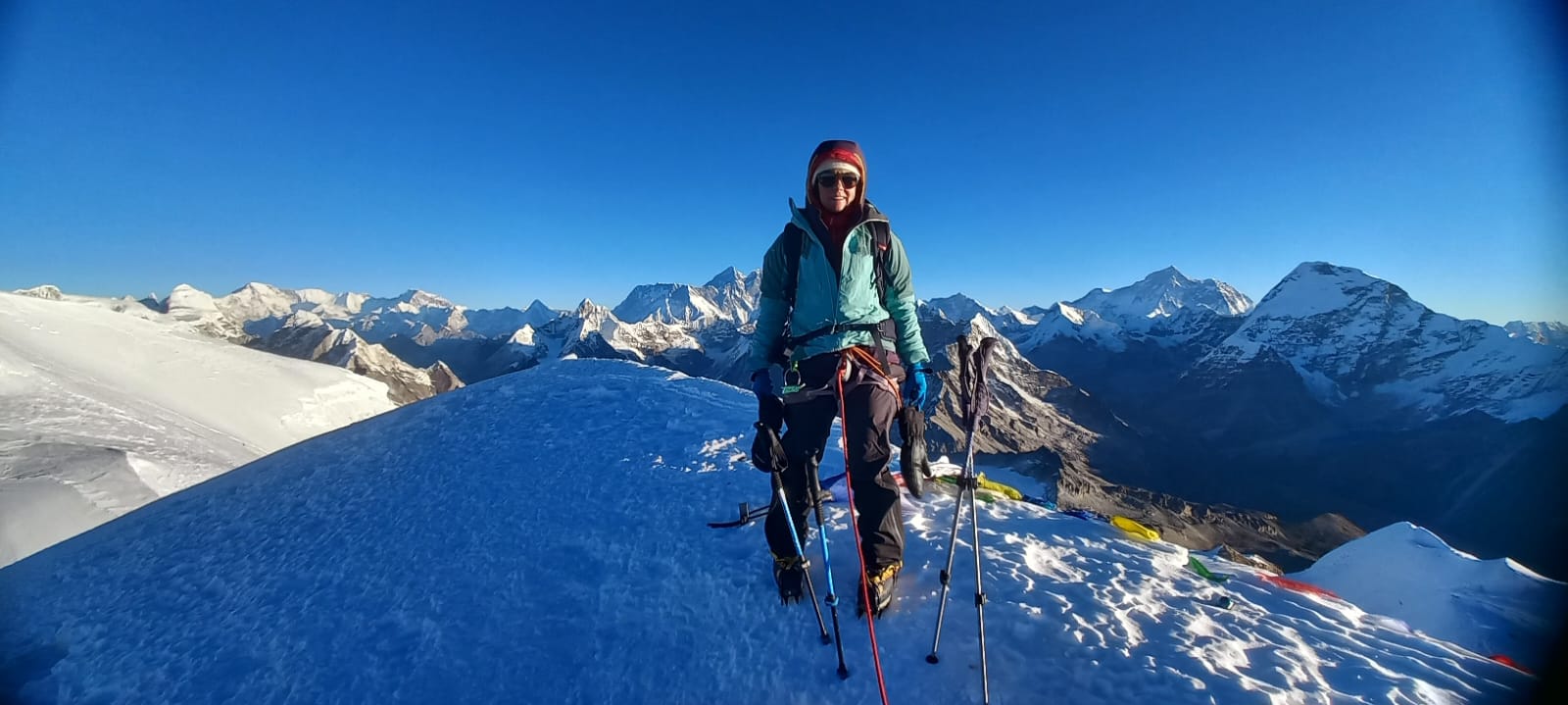
Three Peak Expedition
Embark on an unforgettable journey to the heart of the Himalayas as you conquer three majestic peaks: Mera Peak, Island Peak, and Lobuche Peak. This ultimate adventure combines technical climbing, bre...
Challenges and Highlights of Climbing Lobuche Peak
Climbing Lobuche Peak presents both challenges and highlights that make it a memorable and rewarding adventure in the Himalayas. The ascent to Lobuche Base Camp involves navigating rugged terrain and acclimatizing to high altitudes, which requires physical endurance and mental resilience. Technical challenges include crossing glacial moraines and ascending steep ice and rock faces using crampons, ice axes, and ropes under the guidance of experienced Sherpa guides. Weather conditions, including unpredictable storms and freezing temperatures, demand careful planning and flexibility in summit attempts.
However, the rewards of climbing Lobuche Peak are unparalleled. Highlights include panoramic views of Everest, Lhotse, and Nuptse from the summit, offering breathtaking vistas that capture the majesty of the world's highest peaks. Cultural interactions with Sherpa communities along the trek provide insights into their traditions, hospitality, and Buddhist practices, enriching the climbing experience. Each challenge overcome and summit reached on Lobuche Peak leaves climbers with a profound sense of achievement and connection to the Himalayan landscape.
Weather and Climate in November
November is considered one of the best months for climbing Lobuche Peak due to favorable weather conditions in the Everest region. As the post-monsoon season progresses, November typically experiences clear skies, stable weather patterns, and mild temperatures during the day, making it ideal for trekking and climbing activities. Daytime temperatures at lower elevations range from 10°C to 15°C (50°F to 59°F), while temperatures decrease as climbers ascend higher altitudes. Nighttime temperatures can drop significantly, especially at Lobuche Base Camp and High Camp, requiring adequate cold-weather gear.
Climbers should be prepared for occasional snowfall and colder temperatures at higher elevations, particularly during early mornings and late evenings. Despite generally clear weather, climbers should monitor local weather forecasts and be prepared for sudden changes, including high winds and brief snow showers that can impact climbing schedules. November's weather offers optimal visibility and conditions for summiting Lobuche Peak, providing climbers with a safe and enjoyable climbing experience amidst the stunning Himalayan scenery.
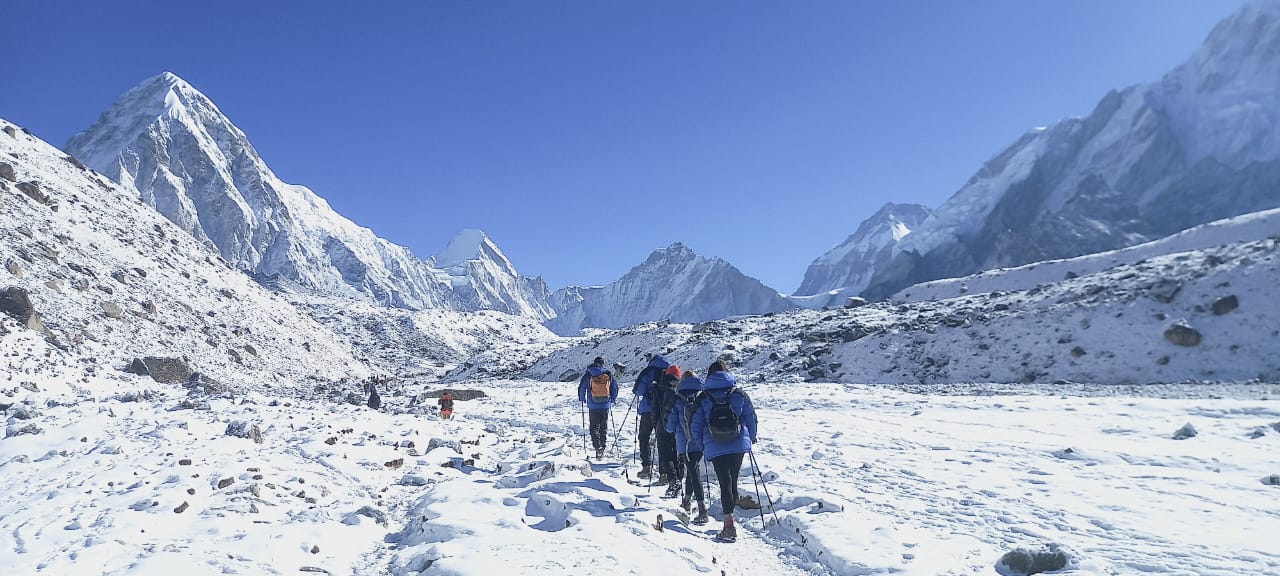
MERA AND ISLAND PEAK CLIMBING
Embark on a thrilling mountaineering adventure like no other with the Mera and Island Peak Climbing expedition crafted by We Sherpa Expedition and Trekking. This exclusive package is designed for adve...
Accommodation and Food on the Trek
Accommodation and food options along the trek to Lobuche Peak cater to the needs of climbers, offering a range of choices from basic tea houses to more comfortable lodges in larger villages. Tea houses provide simple accommodation with dormitory-style rooms and shared bathroom facilities, often heated by yak dung or wood stoves. Meals at tea houses include a variety of dishes such as dal bhat (rice and lentils), noodles, soups, and local Sherpa cuisine, supplemented by tea, coffee, and hot beverages. Accommodations become more basic as climbers ascend higher altitudes, with fewer amenities but still providing essential comforts like warm bedding and hearty meals.
At Lobuche Base Camp and High Camp, climbers typically stay in expedition-style tents provided by trekking agencies, equipped with sleeping bags and insulated mats. Meals at these higher camps focus on high-energy foods to fuel climbers for summit attempts, including pasta, rice, and protein-rich dishes. Water is boiled or treated with purification tablets to ensure safety, and climbers are encouraged to carry sufficient hydration systems or water bottles throughout the trek. By supporting local tea houses and lodges, climbers contribute to the local economy while enjoying authentic Sherpa hospitality and cuisine during their Lobuche Peak climbing expedition.
Cultural Insights: Interacting with Sherpa Communities
Interacting with Sherpa communities along the trek to Lobuche Peak offers climbers a glimpse into the rich cultural heritage and traditions of the Himalayan region. Sherpas are renowned for their mountaineering prowess, serving as guides and support staff for climbing expeditions. Trekking through villages like Namche Bazaar, Tengboche, and Dingboche provides opportunities to visit Buddhist monasteries, prayer wheels, and stupas, experiencing daily rituals and religious ceremonies. Sherpa hospitality welcomes climbers with warm tea and hearty meals, showcasing traditional Sherpa cuisine and customs.
Respectful interactions with Sherpa elders and local villagers enhance cultural exchange, fostering mutual respect and understanding. Climbers are encouraged to learn basic Nepali phrases and participate in community activities such as traditional dances or festivals. Supporting local artisans by purchasing handmade crafts and souvenirs contributes to sustainable tourism practices, benefiting Sherpa communities economically. By embracing cultural sensitivity and learning from Sherpa traditions, climbers gain a deeper appreciation for the spiritual connection between the Sherpa people and their mountainous homeland while forging lasting memories on their Lobuche Peak climbing adventure.

YALA PEAK CLIMBING
Don’t let the height frighten you (5520m). This is a non-technical climb that will afford views for miles and miles in the Langtang region of Nepal. From the summit, you can see Mt. Sishapangma...
Environmental Conservation and Leave No Trace Principles
Environmental conservation is essential during the Lobuche Peak climbing expedition to minimize impact on the fragile Himalayan ecosystem. Leave No Trace principles guide climbers in responsible outdoor practices, including packing out all waste and disposing of it properly in designated facilities in Kathmandu. Climbers should use reusable water bottles and water purification systems to minimize plastic waste and preserve local water sources. Burning only dry wood for cooking and heating reduces air pollution and conserves natural resources.
Staying on designated trails and avoiding shortcuts minimizes erosion and protects fragile alpine vegetation. Climbers should respect wildlife habitats and avoid disturbing local fauna, such as Himalayan birds and mammals. Supporting eco-friendly lodges and trekking agencies that prioritize sustainable tourism practices encourages environmental stewardship in the Everest region. By incorporating Leave No Trace principles into daily routines and trekking practices, climbers contribute to the long-term preservation of the pristine mountain environment and ensure future generations can enjoy the natural beauty of Lobuche Peak and the Khumbu Valley.
Post-Climb Recovery and Reflection
After summiting Lobuche Peak, climbers should prioritize post-climb recovery to ensure physical well-being and reflection on their achievement. Descending back to lower altitudes allows the body to recover from the physical demands of high-altitude climbing. Rest and hydration are crucial during this phase to replenish energy levels and facilitate muscle recovery. Reflecting on the climb includes sharing experiences with fellow climbers, celebrating successes, and discussing challenges faced. Processing emotions and memories from the expedition contributes to personal growth and enhances the overall climbing experience. Engaging in gentle activities such as yoga or short walks promotes circulation and aids in recovery. Taking time to appreciate the journey and accomplishments on Lobuche Peak fosters a sense of fulfillment and gratitude for the Himalayan adventure.
Optional Side Trips and Excursions
Exploring optional side trips and excursions enhances the Lobuche Peak climbing experience with additional cultural and natural attractions in the Everest region. Popular side trips include visits to Everest Base Camp, offering close-up views of the world's highest peak and interactions with mountaineers from around the globe. Hikes to nearby viewpoints like Kala Patthar (5,545m/18,192ft) provide panoramic vistas of Everest, Lhotse, and Nuptse at sunrise or sunset. Excursions to Gokyo Lakes showcase turquoise alpine lakes and the Ngozumpa Glacier, the largest glacier in the Himalayas. Cultural excursions include visits to Sherpa villages such as Khumjung and Pangboche, home to ancient monasteries and traditional Sherpa homes.
Tips for Responsible Travel and Etiquette
Responsible travel practices and cultural etiquette are essential for a positive and respectful experience during the Lobuche Peak climbing expedition. Respect local customs and traditions, including Buddhist monasteries and prayer sites, by asking permission before photographing or entering sacred areas. Dispose of waste properly by carrying out all non-biodegradable items and recycling where possible. Support local economies by purchasing goods and services from Sherpa-owned businesses and artisans. Minimize environmental impact by using eco-friendly products and avoiding single-use plastics. Respect wildlife and natural habitats by observing from a distance and refraining from feeding or disturbing animals. Learn basic Nepali phrases to communicate respectfully with locals and enhance cultural exchange. By practicing responsible travel and etiquette, climbers contribute to sustainable tourism and preserve the natural and cultural heritage of the Everest region for future generations.
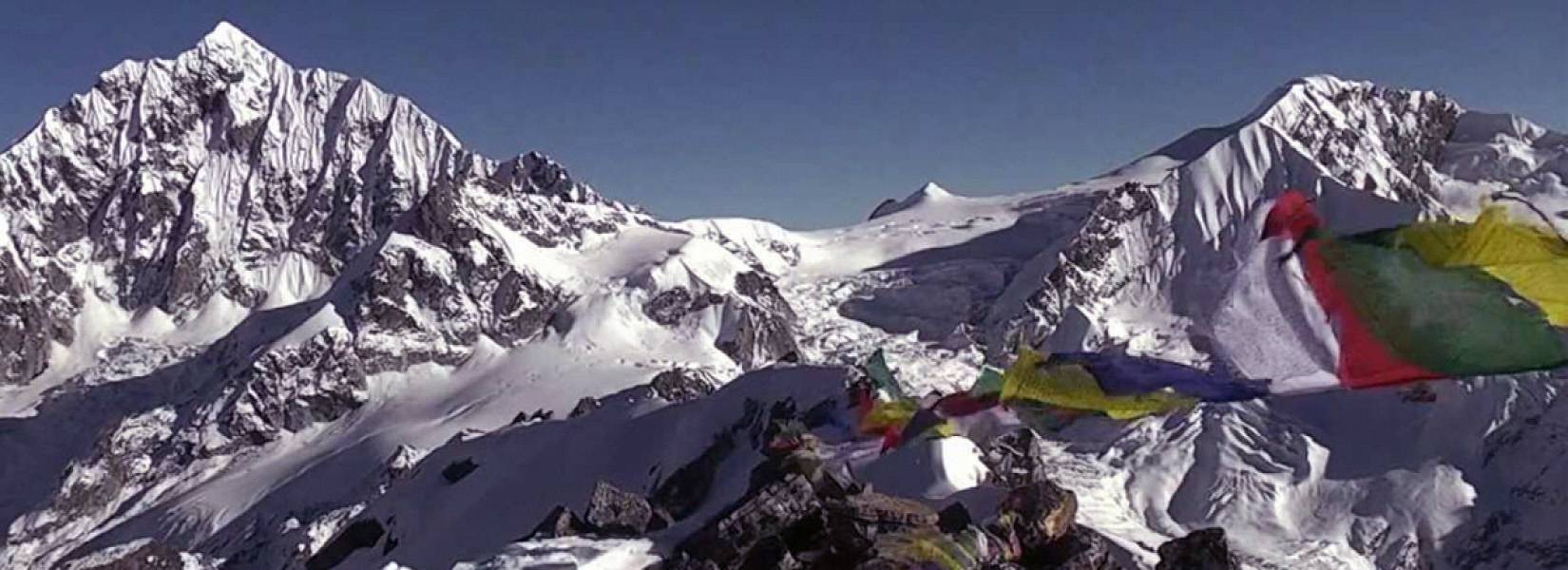
LARKE PEAK CLIMBING
Can there be any greater feeling than standing at the top of a mountain?This climb will test your endurance and determination and give you a true sense of achievement. The rewards are numerous. Firstl...
Resources and Useful Contacts
Accessing resources and useful contacts ensures a well-prepared and informed Lobuche Peak climbing expedition. Local trekking agencies in Kathmandu provide comprehensive services, including permits, guides, and logistics for the trek and climb. The Nepal Mountaineering Association (NMA) offers updated information on climbing regulations, permit fees, and safety guidelines. Medical clinics and evacuation services in Kathmandu and Lukla provide emergency assistance and evacuation options in case of altitude sickness or injuries. Weather forecasts from the Meteorological Forecasting Division help climbers plan for stable weather conditions during the climb. Guidebooks, online forums, and travel blogs offer insights and tips from previous climbers, enhancing preparation and anticipation for the expedition. Building a network of contacts with experienced climbers, guides, and local experts fosters support and camaraderie throughout the Lobuche Peak climbing journey.
Appendices: Maps, Glossary, and Additional Information
Appendices provide supplementary resources and information to support climbers on the Lobuche Peak expedition. Detailed maps of the Everest region highlight trekking routes, villages, and landmarks, aiding navigation and route planning. A glossary of mountaineering terms and Sherpa phrases enhances understanding of technical climbing terminology and cultural communication. Additional information includes packing lists, gear recommendations, and altitude sickness prevention tips for climbers' reference. Emergency contacts for medical services, helicopter rescue companies, and embassy information ensure preparedness for unforeseen circumstances. Appendices serve as valuable resources for climbers to consult before, during, and after the Lobuche Peak climbing expedition, enhancing safety, knowledge, and enjoyment of the Himalayan adventure.
Lobuche Peak Climbing Packages
Lobuche Peak Summit Return By Helicopter
Lobuche Peak Expedition 14 Days
Lobuche Peak Expedition 15 Days
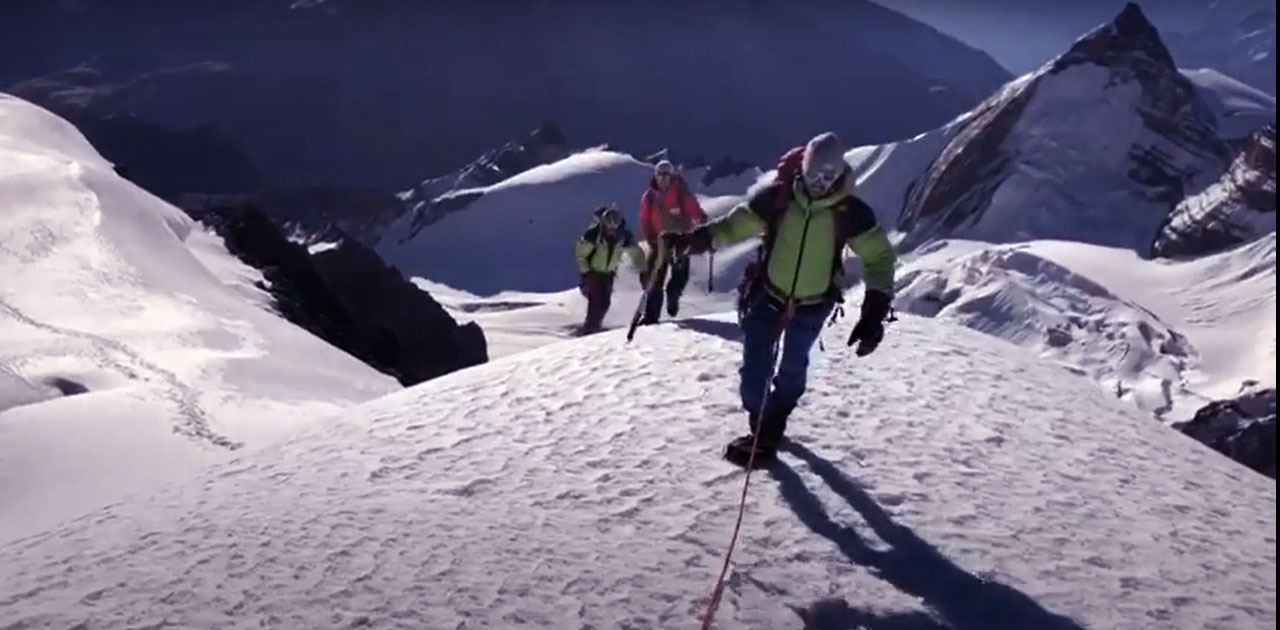
THORONG PEAK CLIMBING
Thorong Peak Climbing requires that you are reasonably fit and have a burning desire to see some of the most spectacular mountain scenery in the Annapurna region of Nepal. Besides climbing to 6144m, y...
Any Questions? Let Us Know.
Recent Posts
17th June, 2025


















